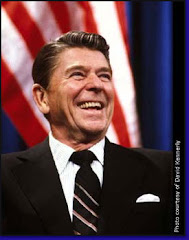Weekly Opinion Editorial
ACTIONS HAVE CONSEQUENCES!
by Steve Fair
Student loans in America amount to more than $1.7 trillion, according to the Federal Reserve. That is the second largest amount of debt for U.S. households, behind mortgages. 46 million people have student loan debt (13% of the total population). 8 million are in default on their student loan. The average student loan debt is $32,731. 40% of people with student loans didn’t finish college. 61% of those in default owe less than $10,000.
President Biden has said he favors forgiving
$10,000 of student debt, but Congress hasn’t warmed to the idea and he has been
relucent to do it by Executive Order (EO).
Senator Elizabeth Warren, (D-Massachusetts) said Sunday on Face the
Nation, she is pushing Biden to forgive $50,000 of student debt. She claims Biden has the authority to do it
by EO and he needs to do it before the midterms.
In the late 1990s, then U.S. Senator Joe Biden
played a role in helping establish and expand the current student loan system,
which makes taxpayers co-signers on every student loan. Biden was one of the architects of bankruptcy
reforms making it hard for those with student loan debt to discharge their
student loan debt by declaring bankruptcy.
President Biden likely regrets that.
Three observations:
First, the government and higher education
created the student loan debt crisis. The
default crisis is a direct result of the fed’s reckless student lending policy. There is certainly a role for government in
fixing it, since they created it, but that role is not to cancel loan
debt. Colleges and institutions of
higher learning ‘sold classes’ to students who had no business going to
college. Colleges were more interested
in increasing revenue than educating students.
Second, forgiveness of student loan debt will
increase inflation. The Committee for a
Responsible Federal Budget(economists) estimate cancelation of 10k of student
loan debt per person will increase inflation by .5 percentage rates over the
next year. Senator Warren (not an
economist) disagrees. “As President
Biden himself says, the way we deal with inflation is not by making people
poorer. The way we deal with inflation
is we attach high prices head on, such as price gouging. We straighten out the supply chain, so goods
can come in to people. Canceling student
loan debt is something that would be good for people all across this country
and more importantly, good for our economy overall.” Warren said.
The government has neither the
manpower or the brainpower to police price gouging, let alone fix the supply
chain? Government bail outs and
giveaways are why we have inflation.
Third, borrowers should be responsible for
their student loans. While the
government’s irresponsible lending practices and college’s zeal to sell classes
to people played a role, the borrower made the decision to incur the debt. It is not the taxpayer’s responsibility to ‘bail
them out.’ Government should reduce administrative fees
and seizures on borrowers who are in default.
Those fees often result in more than the principal. They need to make sure low-income borrowers
never face a situation where they can’t make the monthly payment. They should guarantee those who owe less than
$20,000 who are making payments on time never go backward because of fees. The feds should penalize colleges where class
selling is a practice and limit their ability to be eligible for student
loans. Ultimately, the person who signed
the note, and not the taxpayers, should be responsible for the debt. Actions have consequences.
President Biden has extended a repayment moratorium on repayment, interest and collections for federal student loans to August 31st. This is the fourth extension since Biden took office. Expect some sort of student loan debt forgiveness before the midterms. With $4 gasoline and record food prices, Democrats must do something to excite their base. If Biden cancels student loan debt, it will reinforce the idea Americans should rely on the government to fix their problems when they willingly assumed the risk.






